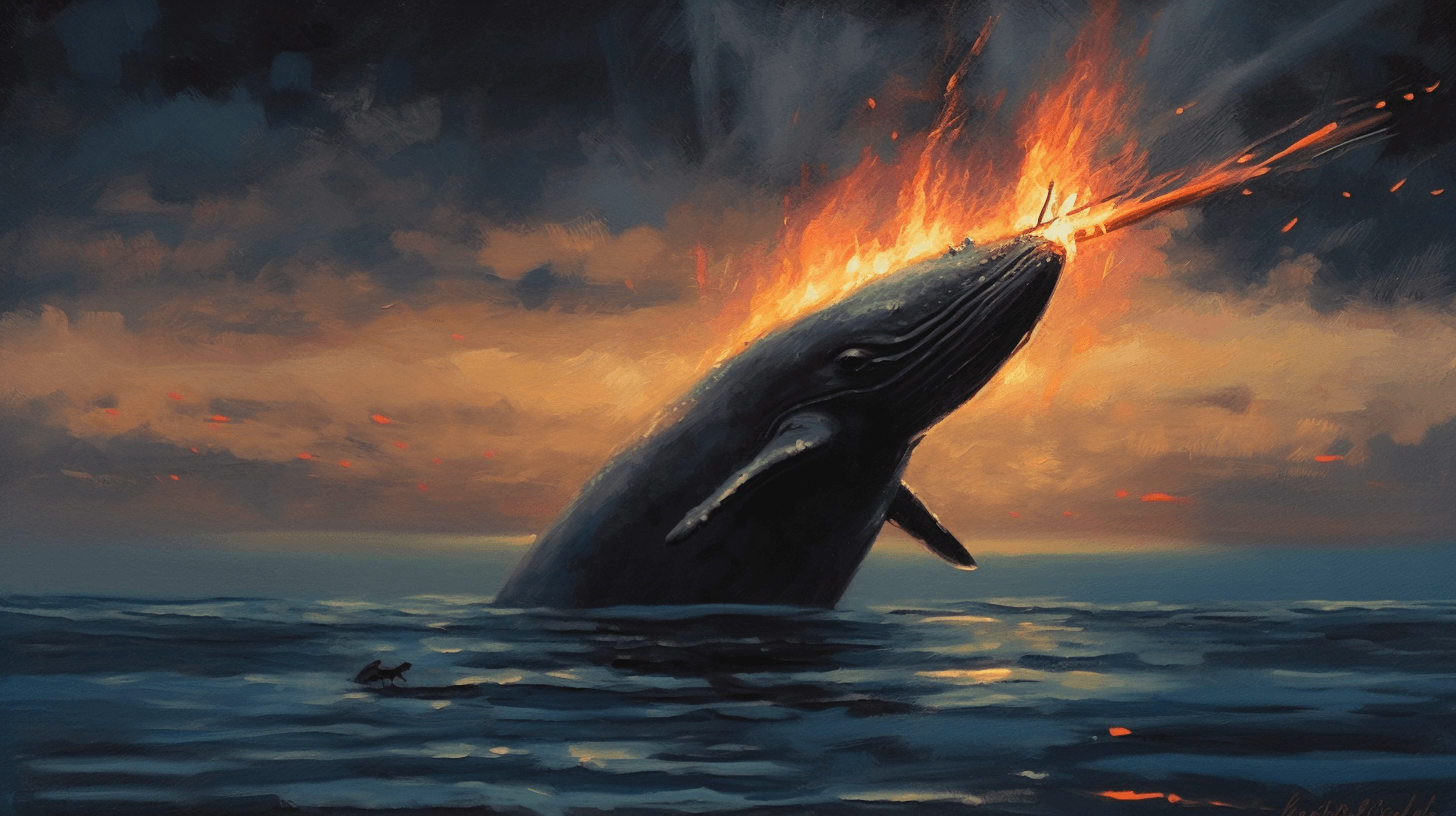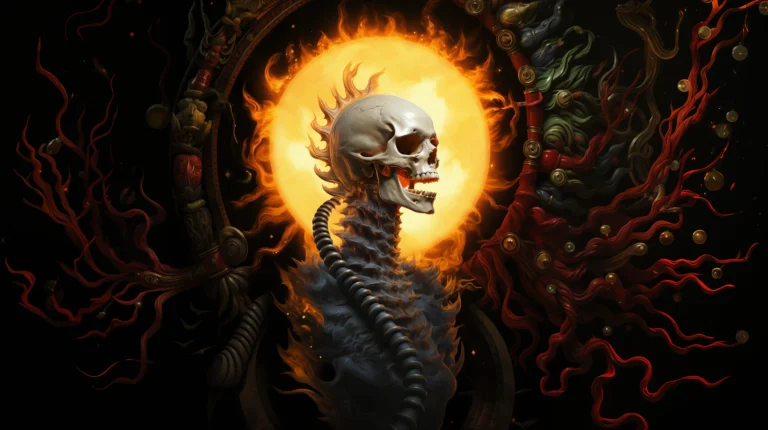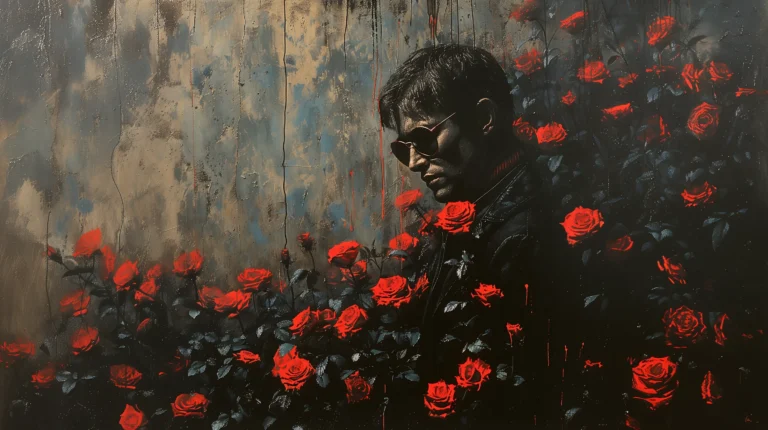Raven of the Eskimo Tale
Raven is a central figure in many Indigenous peoples’ mythology, including that of the Inuit, who are often referred to as Eskimo. As a key figure, Raven is often depicted as a trickster, a transformer, or a cunning creature, often bringing about change through mischief or cunning tactics. While the specifics of the Raven stories can vary from region to region, they all share the common theme of the Raven as a powerful, transformative figure.
One famous Inuit tale is the story of how Raven brought light into the world.
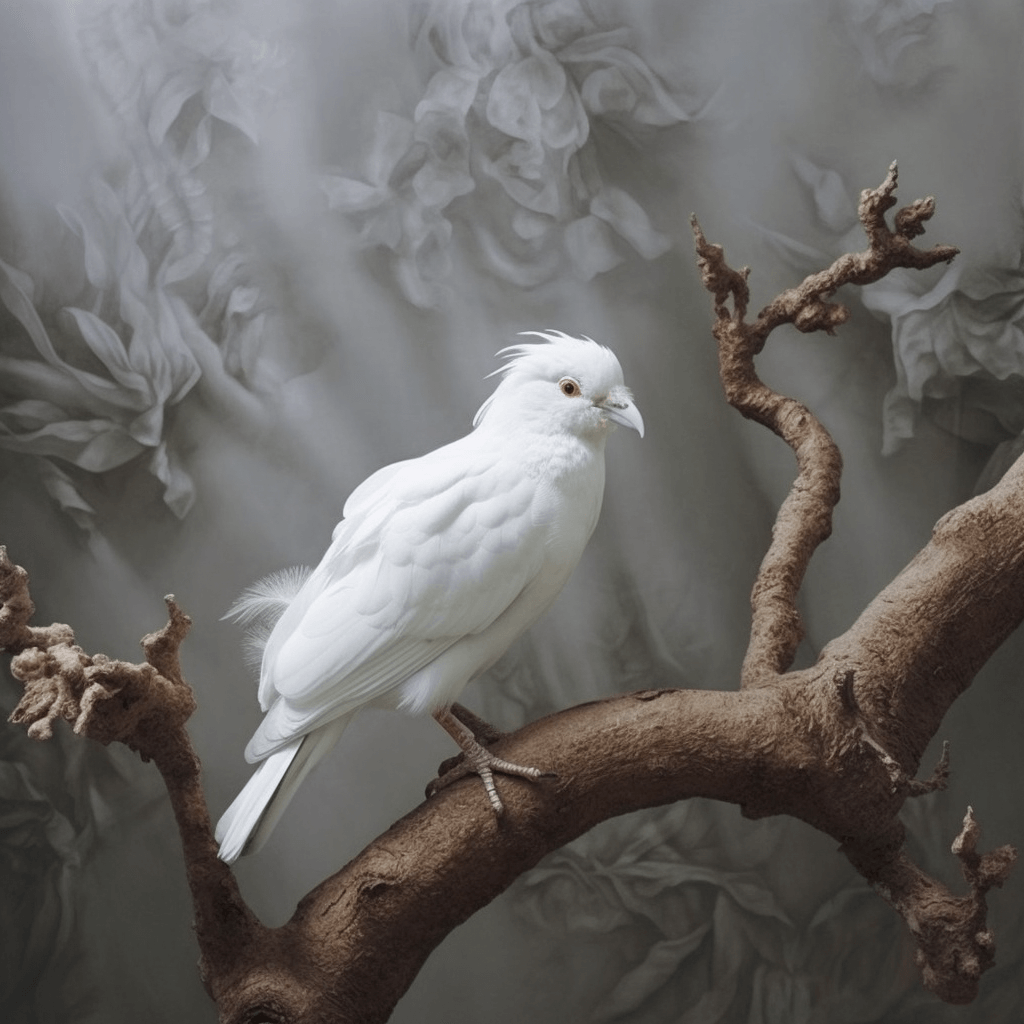
In the time when darkness covered the earth, Raven was a white bird, and the world was dark without the light of the sun, moon, or stars. Raven, who was very clever but also very curious, decided that he would steal the light and bring it into the world.

The light was kept in a box by an old man who had a beautiful daughter. Raven transformed himself into a needle and floated in the river where the daughter was drinking water. She swallowed the needle, became pregnant, and later gave birth to a boy who was actually Raven in disguise.

The boy was very interested in the shiny box owned by his grandfather. After much crying and pleading, the old man finally gave in and allowed the boy to play with the box. Eventually, the boy opened the box, and the stars and moon flew out and into the sky.

The boy pleaded again to play with the box, and this time the old man agreed. When the boy opened the box, the sun flew out, and in the bright light, Raven transformed back into his bird form, seized the sun in his beak, and flew through the chimney and up into the sky.
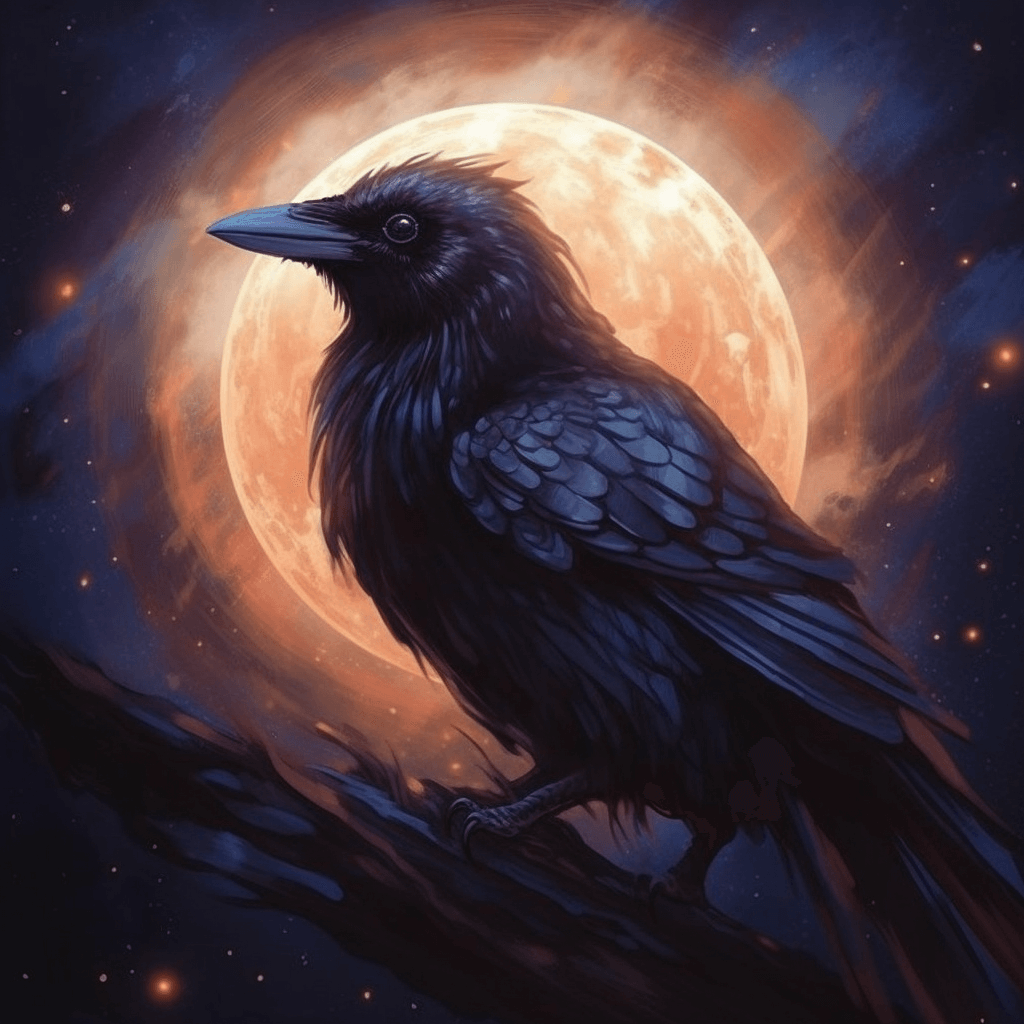
As Raven flew, smoke from the chimney stained his feathers black. He placed the sun into the sky, where it has been lighting up the world ever since. From that moment, Raven remained a black bird as a reminder of how he brought light to the world.
Like many traditional stories, this tale teaches lessons: the importance of curiosity, the consequences of deception, and the transformative power of light and knowledge. Raven, as a trickster, shows both the potential chaos and the possible benefits that can come from breaking the rules. He deceives and manipulates, but his actions also result in the creation of the world as we know it.
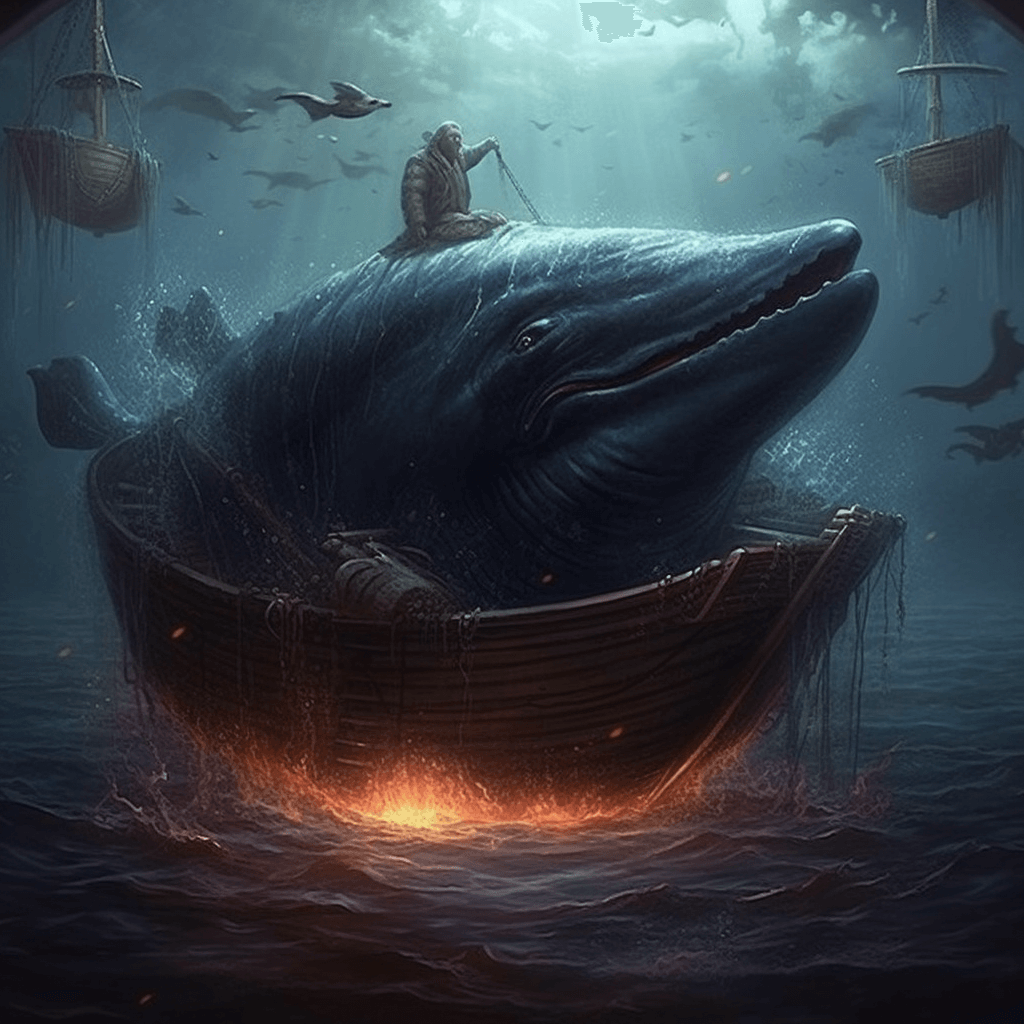
The story of the Raven and the whale is another popular tale in the mythology of the Inuit, as well as other Indigenous cultures of the Pacific Northwest. This tale, like many Raven stories, portrays the Raven as a trickster who often finds himself in troublesome situations but uses his cunning to escape.
Here is a version of the Raven and the Whale story:
One day, Raven became very hungry. While he was searching for food, he saw a whale, but he knew he was too small to kill such a large creature. So, Raven came up with a cunning plan. He transformed himself into a small piece of wood and waited for the whale to pass by.
The whale saw the piece of wood floating on the water and, thinking it was harmless, swallowed it. Raven returned to his original form inside the whale’s stomach and started to eat the whale from the inside, satisfying his hunger.
However, after eating his fill, Raven found himself trapped inside the whale’s belly. He tried to escape through the mouth, but the whale kept it closed tight. Undeterred, Raven decided to trick the whale into opening its mouth.

He began to make a fire inside the whale’s belly. The whale, feeling the heat and the smoke, opened its mouth to cough. Seizing his chance, Raven quickly transformed back into a bird and flew out of the whale’s mouth, escaping back into the sky.
The “belly of the whale” motif is common in mythology and represents a hero’s journey into the unknown, a descent into the underworld, or a form of rebirth. In this story, Raven’s journey inside the whale is a testament to his cunning, showing how he uses his wit to survive and escape from seemingly hopeless situations.
Remember, these tales often serve a dual purpose of entertaining and imparting moral or cultural lessons. In this case, the tale might convey the importance of wit and adaptability in overcoming challenges, or it could serve as a warning of the dangers of greed and taking more than one needs.

